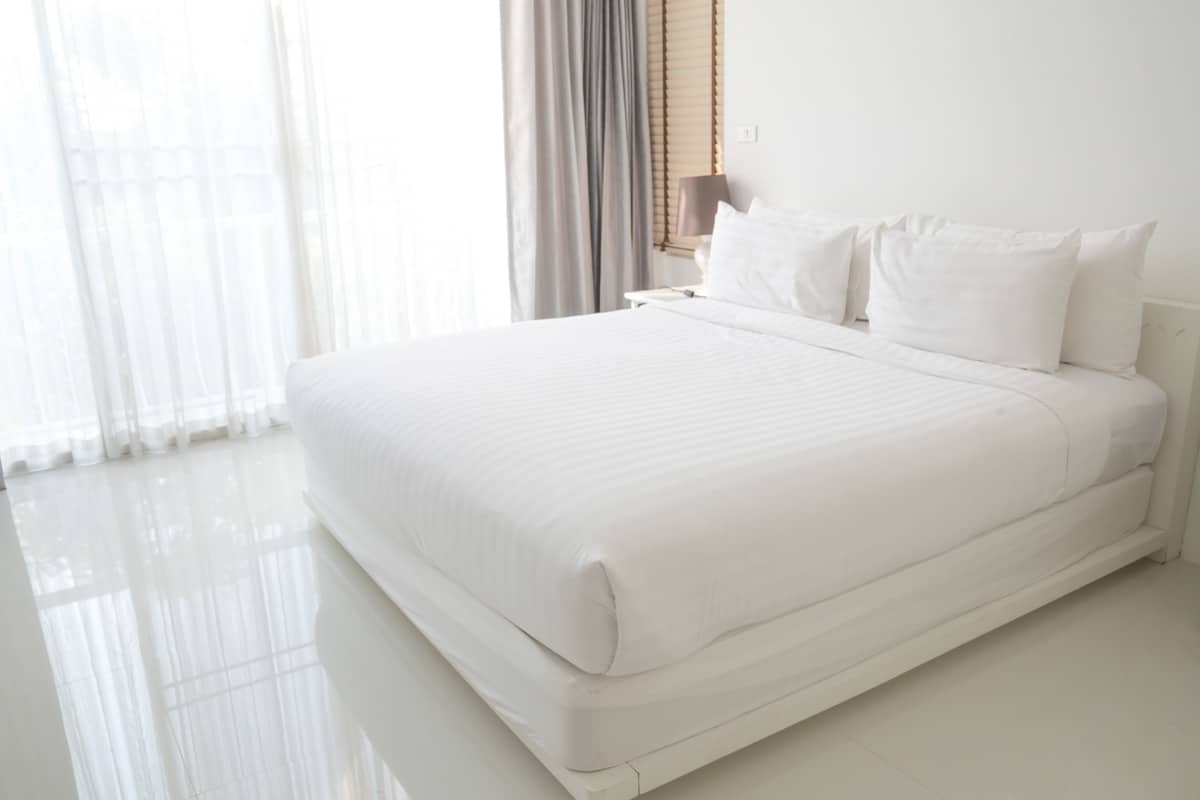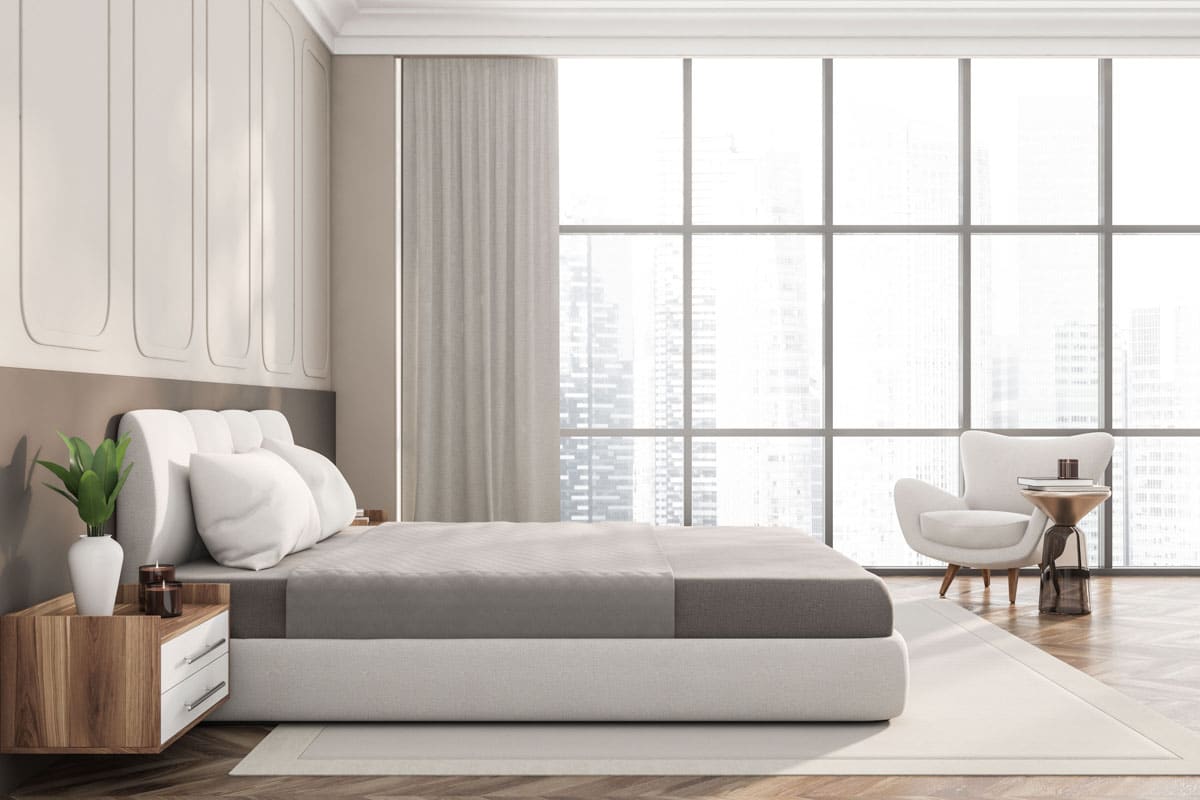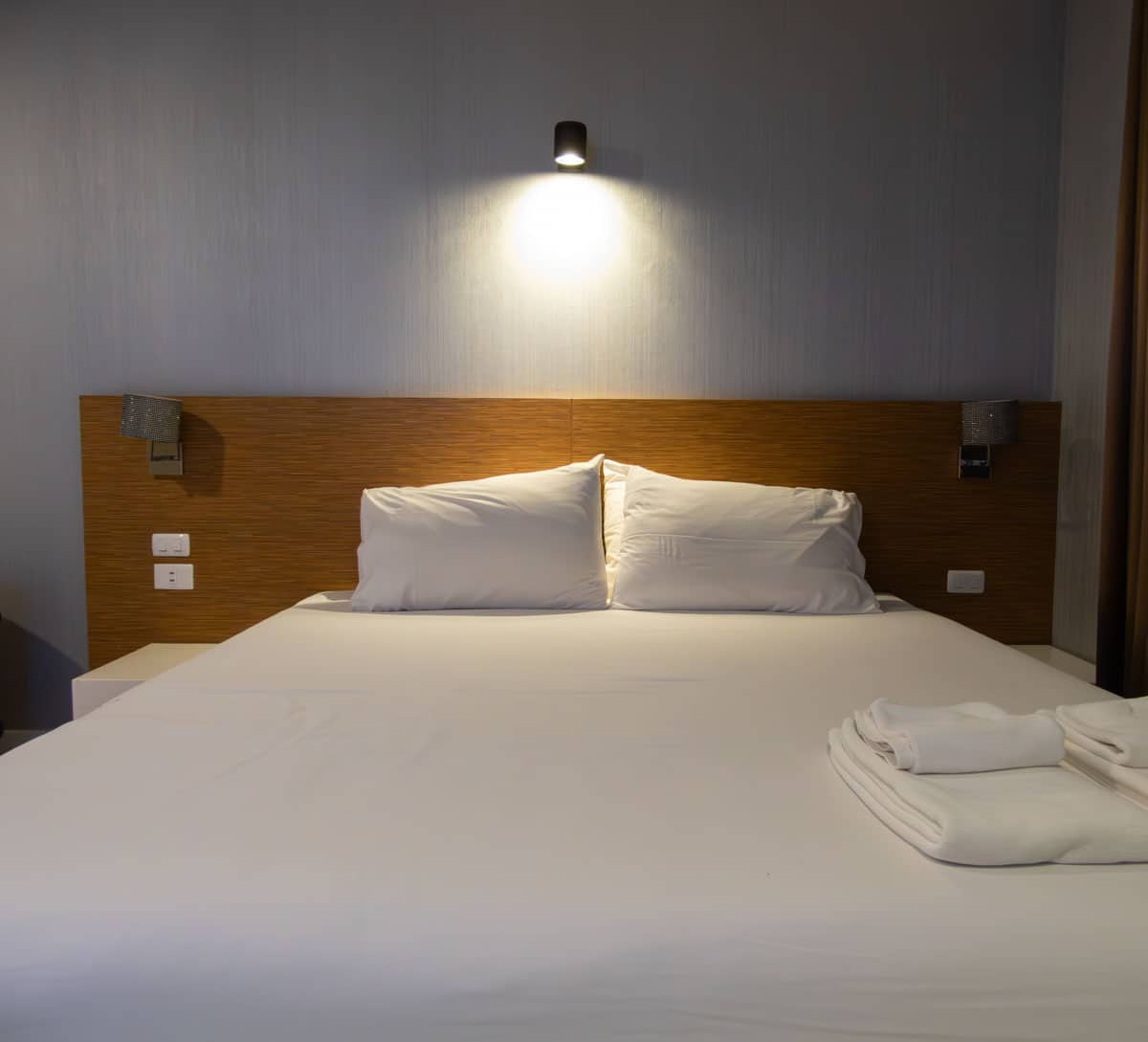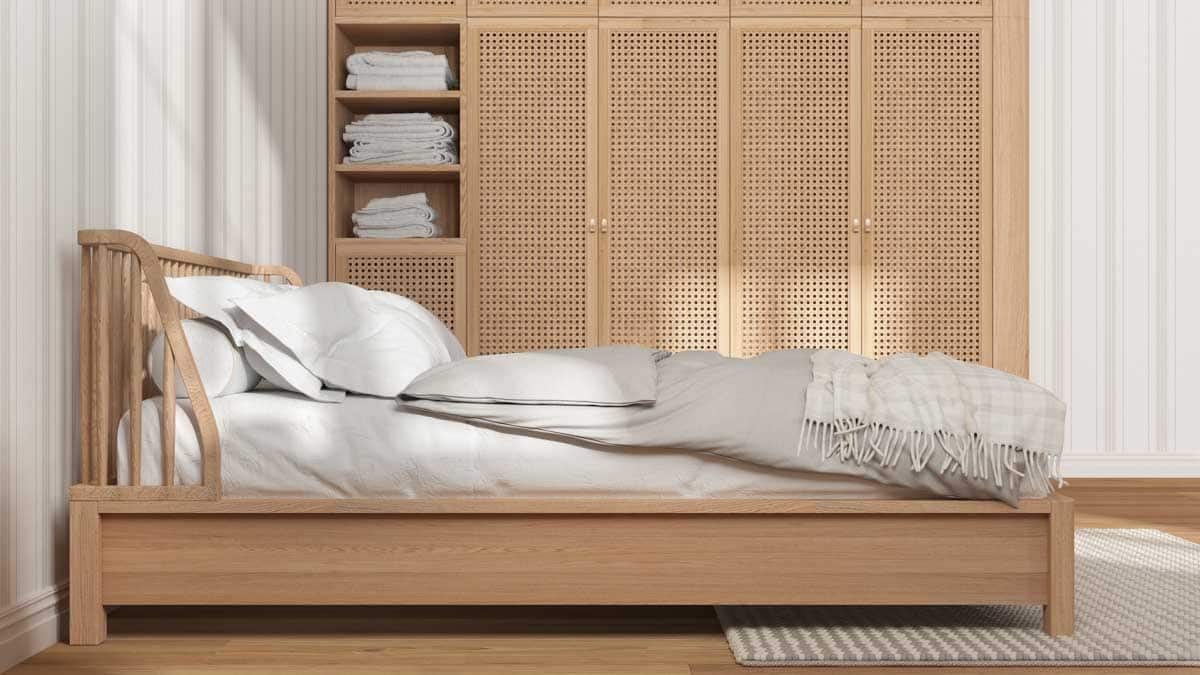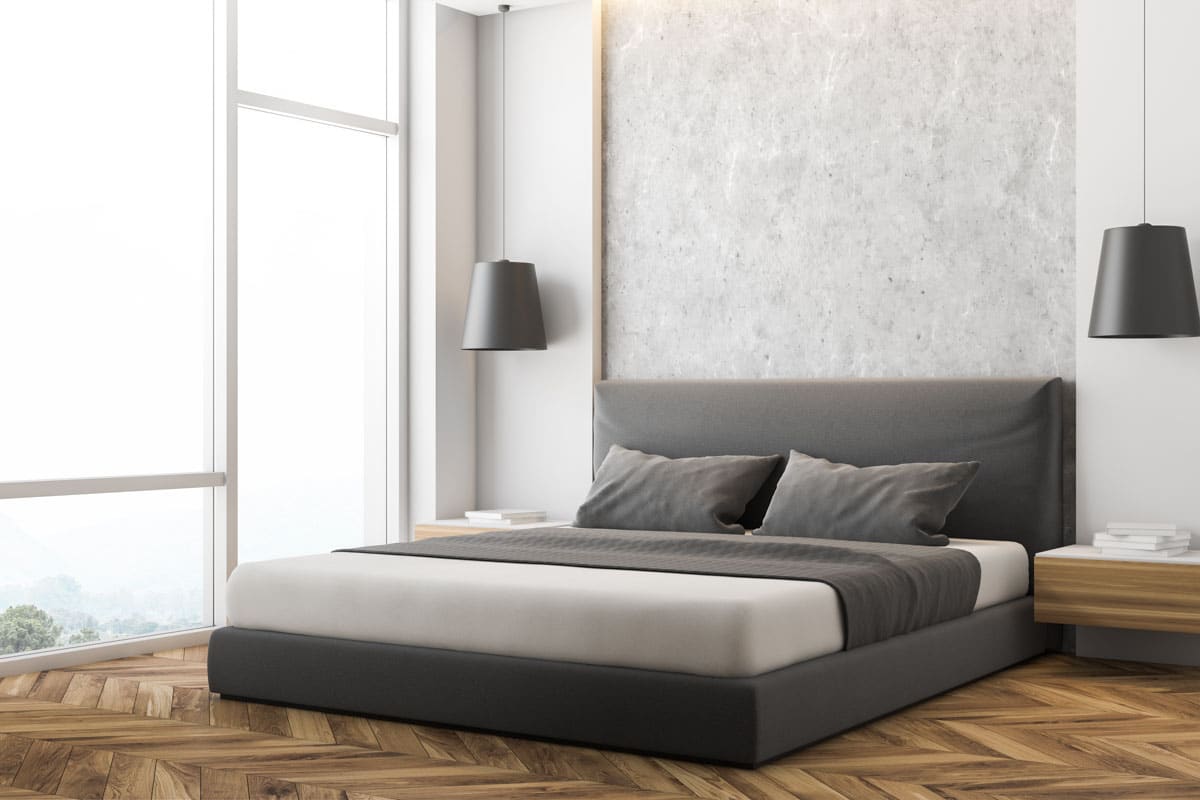Microfiber Sheets Pros And Cons
Discover the different microfiber sheets pros and cons including what this material is, benefits and drawbacks, and effective washing tips to use.

Microfiber has become quite the trending fabric – from sporting attire to towels, it definitely has its uses. But what is microfiber and why is it becoming a must for bed linens? Well, let’s dig into this curious material.
No doubt, microfiber is not your ordinary fabric – it’s something totally different. Instead of referring to the material, the word ‘microfiber‘ actually relates to thousands upon thousands of slender threads woven together to make up one single fabric.
We’ve all heard about the wonderful world of microfiber sheets, but what’s really behind these luxurious sleep surfaces? Let’s dive into these details and figure out whether they’d be right for your bedroom oasis.
Pull up a chair and let’s discuss the advantages and disadvantages of microfiber bedding: you’ll have to weigh up their remarkable features against any potential flaws.
What Is Microfiber Material For Sheets?
Breathable and cozy, microfiber sheets sure know how to make their presence felt – and it all starts with those tiny little fibers. Of course, we’re talking about the tell-tale 1 denier diameter of this fascinating material’s unique composition.
Weaved together using either a percale or sateen weave, the result is something super lightweight yet plushy enough to die for. In other words, these microfibers really put their best foot forward in bedding form.
Microfiber types of bed sheets are the way to go if you’re looking for durability and convenience: primarily made of polyester, nylon, or wood pulp, it’s a synthetic material that doesn’t wrinkle easily.
We have no time for constant ironing and shrinking nightmares. Plus, with these no-hassle bedsheets on your side, not even Mother Nature will be able to dictate how often you launder them.
Notwithstanding their delicate construction, microfiber sheets boast remarkable sturdiness and longevity. Their soft texture creates a sleek finish while temperature control capabilities are similar to those of a weather-resistant coat.
Given their feather-light features, microfibers highly absorb moisture too for an unrestrained doze journey full of comfort and breathability.
When it comes to microfiber sheets, two weaving techniques stand out: percale and sateen. You can almost hear the fabric breathe—the tighter the weave, the longer it’ll withstand washes galore.
As a result, if you’re looking for something luxurious yet durable that requires barely any upkeep, then these lightweight sheets could be just what you need.
Microfiber Bed Sheets Pros
Without a shred of skepticism, it’s clear that microfiber sheets are quite the fad when it comes to bedding. Let’s get into why they’re so special; we’ll show a breakdown of all their distinct benefits one by one.
Very Soft and Comfortable to Lie On: Soft and smooth, microfiber sheets are a treat for the senses. They drape over your skin like cashmere, wrapping you in a comforting embrace that guarantees restful nights. Those fine fibers weave together an exquisite tapestry of luxury so luxurious, it feels almost otherworldly.
Don’t let the higher cost of microfiber make you think you’re getting a heavier fabric. Microfibers are actually much thinner than those of plant- or animal-derived fabrics, such as wool, linen, and even silk. – Window Treatments and Slipcovers For Dummies, Mark Montano, Carly Sommerstein
Lightweight and Breathable: Light as a feather, microfiber sheets give an added boost to your airflow. By allowing optimal air circulation throughout the night, you receive superior ventilation and can finally say goodbye to those sticky summer nights that make it near-impossible to get comfy in bed.
Wrinkle- and Shrink-Resistant: Unlike their traditional rivals like linen and cotton sheets, microfiber demonstrate serious staying power when it comes to wrinkling and shrinking – a feat that barely gets any applause. And if you’re looking for the ultimate combo of resilience and comfort, then these particular sheets have your back every step of the way.
These tough sheets stay perfectly crisp and unharmed even after lots of washes, giving you an immaculate look without having to fuss with pressing or maintaining them all the time. In fact, they never seem to falter no matter how hard life throws at them.
Extremely Easy to Maintain: Microfiber sheets boast their convenience and coziness in one package – washing is a breeze, and ironing won’t be necessary. Perfect for those of us living in the hustle-bustle world, this type of bedding ensures a hassle-free experience when dressing most types of mattresses with comfort that doesn’t sacrifice time efficiency.
Incredible Durability: Microfiber sheets are truly in a league of their own, proving more durable than your everyday fabrics. Their exquisitely interwoven fibers give them impressive strength – easily fending off signs of wear and tear like it’s nothing.
With their extreme durability, microfiber sheets can iron-clad handle everyday use and washing cycles without fading or weakening. In other words, they’ll keep their structural integrity and good looks for the long haul.
Microfiber Bed Sheets Cons
Just like any other sheet material, microfiber sheets also have their set of downsides. Below are some of them:
Not as Breathable as Natural Fabrics for Sheets: Microfiber sheets are undoubtedly breathable to a degree, but they just can’t quite compete with natural fabrics like cotton or linen sheets as those materials have unstoppable airiness.
In sultry climates, or if you’re one of those people who sleep like they’re lying on the surface of the sun, microfiber sheets could be a snooze-killer.
Their low breathability may clog up air circulation and stop heat from dissipating properly, eventually leading to that annoying ‘no-sleep’ scenario.
May Sometimes Lead to Pilling: Microfiber sheets have a tendency to pill when abused in any way. Whether it’s rough handling or constantly washing them, those pesky fibers are always out for revenge.
Most types of pillows present a major problem – tiny fabric balls begin to form on the sheets, degrading their look and feel. Thankfully, if you’re careful with how you wash them and keep abrasive materials away, that issue is likely to be pretty quickly resolved.
Potential Static Build-Up: Microfiber sheets may seem charming, but they’ve got one major downside – static. Nobody likes being shocked by their PJs every time they climb into bed.
Fortunately, if you add fabric softener into your wash cycle or use dryer sheets while the laundry tumbles in the dryer you can kiss goodbye to those pesky sparks of static electricity – giving sweet relief until your next load of freshly-washed linens.
Ecological Considerations: Microfiber sheets are majority-synthetic and made from non-renewable resources. The manufacturing and trashing of these sheets are also not helping Mother Nature either; it’s a lose-lose all around.
Despite some companies selecting to manufacture environmentally friendly options compiled from reused materials, effectively minimizing its contribution to the eco-friendly microfiber disaster that plagues our planet – an ambitious effort.
Not that Absorbent: Microfiber sheets boast some okay moisture-wicking abilities, but when compared to the absorbency superstars like cotton or linen, they simply can’t compete.
Despite their impressive absorption skills, manmade materials just can’t match the absorptive power of natural fabrics in regard to sweat and liquid.
Is Microfiber Hot To Sleep On?
Microfiber sheets are considered lightweight and airy, but just bear in mind these types of fabrics can attract more body heat. Though they may offer some level of breathability, it’s probably not the best option for people who sleep hot or those in hotter regions. Yes, generally speaking – microfiber might be a no-go in this case.
If you’ve been consistently sweating buckets during the night, keep in mind that a great alternative is any of these top-notch cooling sheets that promise to regulate your temperature and give you nothing but peaceful sleep. It may be a small switch in the grand scheme of things, but it’ll make all the difference come bedtime when everything’s nice and cool.
Do Microfiber Fabric Sheets Get Softer?
Microfiber sheets have the potential to gently transform into something silky smooth over time. To begin with, they often feel a bit more rugged than traditionally softer natural fabrics like cotton or linen; but with every wash and snuggle-in, those fibers get looser, which leads to a result that’s as comfy as can be.
In addition, the softness of microfiber sheets sure varies a lot. If you want something truly cozy yet ritzy, then pick those higher-quality ones with a high thread count because there’s no compromising on comfort – they’ll give you that extra warmth and cushiony touch.
It is definitely true that a good fabric softener can really give microfiber sheets an extra-luxurious feeling – but then again, everybody wants something different when it comes to sheet softness.
Don’t forget, always make sure you check out product reviews and descriptions before making your purchase so you’ve got the perfect set of sheets for your level of comfort.
Should You Wash Microfiber Bedding Before Use?
Typically, it is a no-brainer to wash your microfiber sheets prior to initial usage. They may be made in a dirt-free atmosphere with no contaminants around, yet washing them beforehand helps get rid of any trace amounts of gunk that could have somehow remained on them after production. So don’t forget – give those fiber sheets an extra rinse before them.
Make sure to give your sheets a thorough pre-wash. It’s peaceful knowing that you have pristinely clean, crisp sheets under you all night long for a cozy and healthy sleep.
Making sure your microfiber sheets are squeaky clean before use is of utmost importance! Here is a foolproof guide to guarantee you get it right every time:
• Adhere to The Care Instructions: Make sure you always check what the manufacturer suggests in terms of washing microfiber sheets. It’s important not to just go off and do your own thing because that could land you with a real mess on your hands.
• Always Use A Mild Detergent: When it comes to washing fragile, go easy. Pick up a mild detergent tailored for delicates – nothing too abrasive or intense that could tear the fibers apart or drain them of their softness.
• Avoid Bleach And Fabric Softeners: Avoid using bleach and fabric softeners at all costs. Unless specifically instructed by the manufacturer, it’s best to steer clear – they can destroy the quality of microfiber cloths and reduce how well they work!
• Wash Separately Or With Similar Colors: To keep your microfiber sheets looking and feeling good as new, always wash them apart from other fabrics or with similar colors. That way, you can guarantee any dye won’t run and ruin the lovely vibrancy of your favorite cozy sheet set.
• Select The Appropriate Water Temperature: Always take a look at those care instructions. Though most microfibers prefer either cool or warm temperatures, they’ll guide you to get it just right.
• Choose A Gentle Wash Cycle: Go for a gentle wash cycle on your washing machine – it will greatly reduce the amount of friction, ensuring your fabric stays just how it is.
• Air Dry Or Tumble Dry On Low Heat: It’s best to let nature take its course and air dry. But if you’re in a hurry or want to steam away any leftover moisture, give the tumble dryer a whirl – just be sure to keep that heat low. That’ll prevent your fabric from feeling fried.
After taking that extra step of washing your microfiber sheets before their debut, you can ensure they are clean as a whistle. Then you can get cozy and indulge in the heavenly softness, coziness, and splendid performance right away – no more waiting around.
Can You Put Microfiber Materials In The Dryer?
Absolutely, throwing those microfiber sheets into the dryer shouldn’t be a problem. Microfibers, an incredibly reliable artificial fabric, sure do the trick when it comes to drying quickly.
Taking the time to follow your microfiber sheet manufacturer’s specific care instructions is key if you want those beauties to stay in pristine condition. Generally speaking, here are some tips for drying them right:
• Read The Care Label: Check out that care label for any special instructions from the manufacturer on how to dry. This better be done right if you wanna avoid any wrinkles.
• Use A Low Heat Setting: Turn your dryer to low or delicate heat, no higher – high temperatures can ruin the fibers and make your clothes all shrunken or melted.
• Avoid Dryer Sheets Or Fabric Softeners: Stepping away from dryer sheets and fabric softeners can be a tough habit to break. But in reality, it’s the right thing to do when you’re dealing with microfiber because this tends to get some serious static clinging going on.
• Do Not Over-Dry: Take your microfiber sheets out of the spin cycle as soon as they’re done or somewhat damp, otherwise, you risk either burning them up or leaving them all wrinkly. Plus, overdrying is a surefire recipe for crazy static cling, especially for large microfiiber bed sheet sizes.
• Shake Out And Fold Promptly: Give your sheets a vigorous shake and get those last wrinkles out before you fold them up tight. As soon as they’re done in the dryer, jiggle them up and down well to smooth everything out – no lumps left behind.
How Often Should You Wash Sheets Made From Microfiber?
Depending on the level of use, a regular wash cycle about every week to ten days should do the trick, ensuring that even after some serious snuggle sessions, you can sleep comfortably knowing that hygiene and cleanliness have not been neglected.
Nevertheless, how frequently one washes their microfiber sheets is entirely up to them – it all just depends on the situation and individual preference. Thinking about a few of the ensuing factors can help inform this decision:
Factor #1 – Personal Preferences: Do you like your sleep to be as crisp and clean as possible? If that’s the case, then you might want to hop into a washing machine with your microfiber sheets at least once a week, just for kicks.
Factor #2 – Allergies or Sensitivities: If you have allergies, sensitive skin, or breathing problems, don’t forget to wash your microfiber sheets more often. Doing so can banish those pesky allergens, dust, and irritants that can build up on the fabric and make matters worse.
Especially if you’re prone to hay fever, giving them an extra spin in the washing machine is a really smart move.
Factor #3 – Climate and Season: During those sweltering summer months when your clothes are drenched and you feel like you can barely breathe, consider upping the frequency of washing your bed sheets. That way, you’ll stay comfortable while having a fresh sleep environment.
Factor #4 – Bedtime Habits: If you’re a sweaty sleeper, slather on lotion or oil before snoozing – if you find yourself eating and drinking in bed too often, regular washing of your microfiber sheets is key to tackling any stains, odors, and residue that accumulate.
Factor #5 – Spills or Accidents: Accidents happen, and when your sheets get marked up there’s no time to waste – if you want to prevent those stains from setting in and keep your sheets hygienic, it pays to wash them pronto.
Which Is Better For Sheets: Cotton Or Microfiber?
Well, you certainly got yourself an intriguing question here. The answer to it is not exactly crystal clear. When choosing between cotton and microfiber bedsheets, you have to go with what suits your fancy and meets your individual needs best.
Cotton sheets bring a luxurious, breathable feel to your bedroom – and many people turn to them for their superior softness.
As these sheets soak up moisture better than most other materials out there, it’s no wonder why plenty of folks swear by them. Plus, the crisp traditional fabric is not bad either – just adds to that extra bit of comfort.
On the flip side, microfiber sheets are feather-light, durable as steel, and won’t wrinkle or shrink up on you. Their soft texture is no doubt why they’re so popular. Plus, they don’t cost an arm and a leg like cotton often does. These sheets take next to no maintenance and adjust to your body’s temperature naturally.
Ultimately, it’s down to each individual’s preferences, needs, and budget when they’re choosing between cotton or microfiber. From the subtle touch of texture to cost concerns – you might even call it a no-brainer.
See more related content in our article about the pros and cons of silk sheets on this page.


